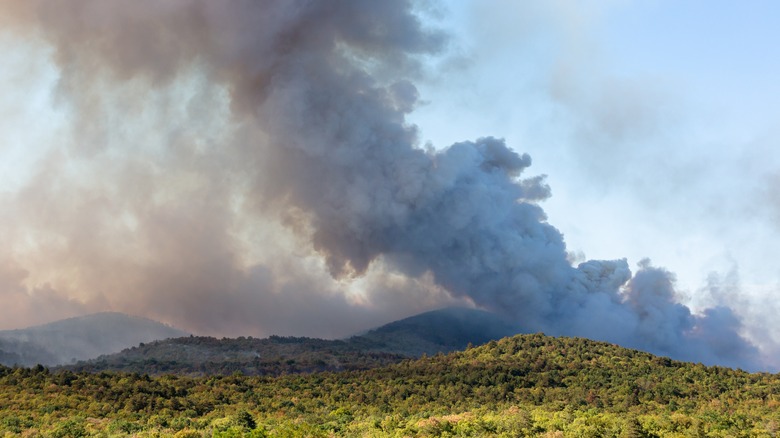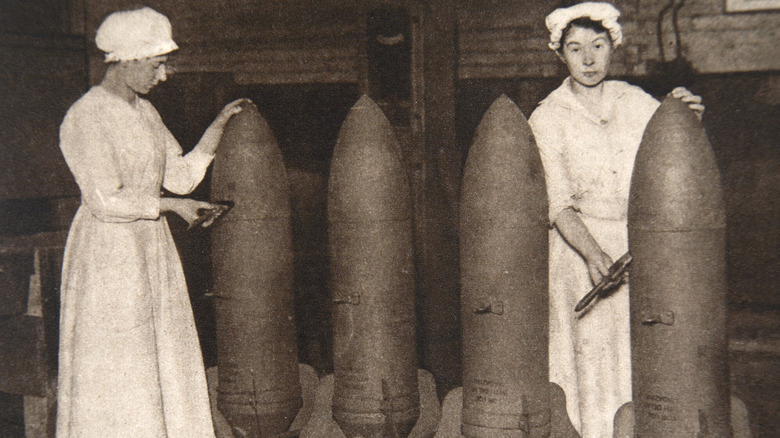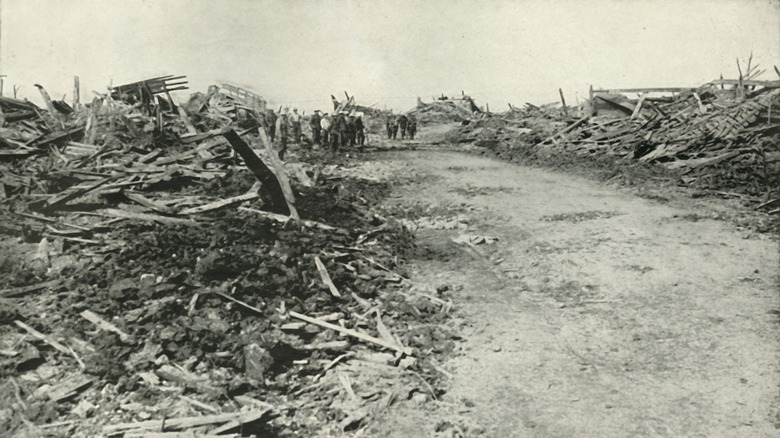The Unexpected Explosive Results Of Historic Wildfires In Slovenia
Nestled between Austria and Hungary, Slovenia is a central European country that rarely makes international news (via Britannica). However, AP News reports that Slovenia is currently making waves as it battles wildfires in the Kras region. The country says that it's their biggest wildfire to date since becoming an independent nation back in 1991. Al Jazeera explains that several European countries, including Spain, Portugal, and France, have been dealing with raging wildfires due to a recent heatwave, climate change, droughts, and other factors. Per the Copernicus Programme, Kras' arid and windy climate provides the perfect formula for wildfire conditions.
According to the Slovenian Press Agency, the fire has been raging since July 15, adding that as of July 24, it appeared to be under control. Vice states that it's spread to over 5,000 acres of land and is being controlled by more than 1,000 firefighters and the Slovenian military. The fires have also led to the evacuation of an estimated three villages near the Italian-Slovenian border (via Task & Purpose).
Vice also notes that the region has an interesting history. During World War I (which ended in 1918, per History), 12 battles were fought here, resulting in the deaths of 200,000 people. More than a century later, unexploded bombs that were left over from World War I are now posing a problem to firefighters.
Bombs from World War I were set off
Vice reports that on July 22, one of these World War I-era bombs went off while firefighters fought the blaze. Although no one was hurt, shrapnel did fly through the air. Total Slovenia News writes that as of July 21, around 70 grenades had been discovered in the area. Besides being a clear safety issue, the bombs, also known as unexploded ordnance, were interfering with the firefighters' ability to control the wildfire. Defense Minister Marjan Šarec stated, "The problem is that because of the unexploded ordnance firefighting units cannot penetrate into the fire but can only act on its edges. This is why the fire is being intensively fought from the air as well."
Per Total Slovenia News, there have been so many explosions caused by the leftover World War I ordnance that officials have stopped counting them. Darko Zonjič from the national unit for the protection against unexploded ordnance admitted that only those that are close to roads are being recorded. He added that explosives outside of the affected wildfire area are being disposed of.
According to Task & Purpose, the bombs, although dangerous, are not likely to contain mustard gas, a substance that causes chemical burns. Even so, HistoryNet points out that unexploded bombs from both World War I and World War II continue to be modern-day issues in Europe.
It will take decades to rid Europe of unexploded ammunition
According to Smithsonian Magazine, the American and British Air forces dropped 2.7 million tons of bombs on Europe during World War II. About 10% of those did not detonate. The BBC explains that in England specifically, the Ministry of Defence has been involved with disposing of German bombs from World War II. They estimated that since 2010, they had dealt with 60 bombs a year. In Italy, Atlas Obscura states that 30 or more companies are tasked with finding and disposing of unexploded ammunition from both World Wars. Per Euronews, it's believed that 300,000 tons of unexploded ordnance from the World Wars are in the Baltic Sea.
The publication stated that besides being a safety concern, the ammunition is polluting the sea, causing environmental issues. An article from Reuters in 2018 writes that bomb disposal experts surmised that cleaning up Eastern France from World War I-era unexploded bombs would take 100 years more. Reuters further notes that the fighting, which occurred over 100 years ago, had physically altered the land. It seems that as climate change continues to progress, these bombs will continue to be set off. Like this summer's wildfires, a 2018 article from Insider reported that a heatwave across Europe had led to wildfires and the risk of bombs from World War II exploding.


